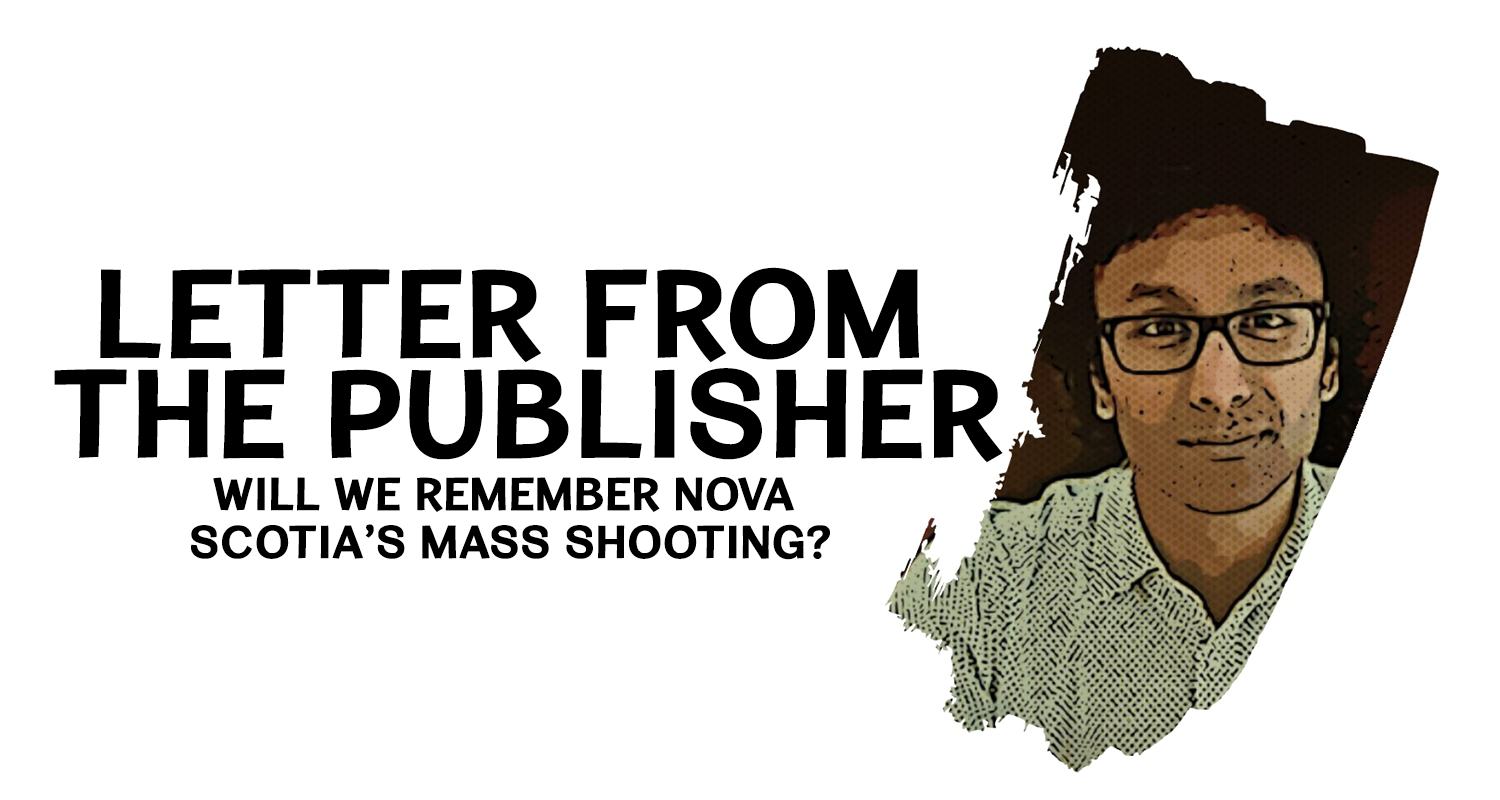Will we remember Nova Scotia’s mass shooting?

It’s been three weeks since the mass shooting in Nova Scotia.
It began in Portapique, about a 30-minute drive from Truro, a small town where I grew up and where my parents still live. Portapique is a beautiful village on the Cobequid Bay. I have vivid memories of hanging out with my family and friends on the trails in and around the village.
In a region where, I can tell you, the friendliest people in the country live, news of the shooting came as a shock. The shooter evaded police for more than 12 hours and killed 22 people, including a police officer, a nurse, firefighter, and teacher.
This mass shooting is the worst of its kind in Canada since a gunman killed 15 women at the École Polytechnique in Montreal in December 1989, since a man driving a van deliberately ran over and killed 10 people in Toronto in April 2018, and a man shot dead six people at the Islamic Cultural Centre in Quebec City in 2017.
Will we in the rest of the country remember it?
A quick Google Trends search tells us that interest in it spiked the week of April 20th and then dropped over 90 percent the following week. It continues to decline. The top five regions where the most searches originated were Nova Scotia, Prince Edward Island, New Brunswick, Newfoundland and Labrador, and Yukon Territory. The more troubling aspect of this, of course, is that Ontario, Québec, and British Columbia, three of Canada’s largest provinces made the bottom three of the country’s 13 provinces and territories when it came to interest.
Small places are systematically, and usually unconsciously, ignored, and devalued by larger regions.
I live in Ottawa now and have learned that it’s easy to forget about small places even if you’re from there. Why? Urban experts such as Richard Florida have convinced us that the creative class lives in cities. The terms “smart city”, “urban innovation,” and the “triumph of the city” — these have become popular words and even book titles.
As McGill University professor Richard Shearmur points out, non-urban creativity has been overlooked because the language we often use to discuss creativity and innovation has such a pro-urban bias that we’ve forgotten these qualities flourish outside of cities, too.
The thing is, we’re all connected to small places in this country. According to the Canadian Rural Revitalization Foundation, 30 percent of Canada’s population lives more than 100 kilometres outside metropolitan areas of 500,000 people, and 20 percent of people live in rural and remote areas (places with no more than 10,000 people), and non-urban Canada contributes approximately 30 percent to Canada’s GDP. Small places are abundant, not just in natural resources but in social, intellectual, and cultural capital. Resourcefulness is a way of life, and creativity is necessary.
Even during the coronavirus pandemic, Stanfield’s, a 138-year old Truro, Nova Scotia-based company known for its trademark long johns, underwear, and T-shirts, is producing over 130,000 medical gowns a week for Canadian health care workers in the fight against COVID-19.
There is a lot to learn from small places, particularly for Canada’s post-pandemic recovery, when we need demonstrated solutions that have revitalized local communities and economies. Let me give you two examples in Nova Scotia alone.
Based in Sydney, Nova Scotia, New Dawn is the oldest community development corporation in Canada, founded in 1976. New Dawn realized that Nova Scotians invest more than $600 million a year in RRSPs but less than 2 percent of this is actually reinvested in Nova Scotia. So, they created New Dawn Holdings, where your RRSP investment dollars stay in Cape Breton and are put to work in the local community. New Dawn is a founding member of the Canadian CED (Community Economic Development) Network, which you may be more familiar with.
A newer example is Life.School.House., a modern folk school that opened in 2018 in Dartmouth, Nova Scotia. Folk schools are typically informal learning spaces in communities where neighbours become teachers, sharing arts and traditional skills in small group workshops with a focus on building community economic inclusion. The Life.School.House model focuses on social capital — using a barter-based trade system, which breaks down the financial barriers many people face when trying to access education.
There is plenty of innovation outside of large cities just like these ones — if we choose to pay attention. At Future of Good, we’re putting a concerted effort to surface the creativity in small places — from an innovative program that addressed the opioid crisis in Strathcona County, Alberta to a ground-breaking initiative that’s preserving culture and language in Cambridge Bay, Nunavut.
If we ignore small places, we massively miss out on their wisdom when it comes to adaptation and resilience — two qualities that will matter for communities of all sizes to build back better.
The principle of solidarity was tested following the mass shooting, and one thing we all can do is commit to better understanding the spirit of innovation and adaptation in small places.
Vinod Rajasekaran
Publisher & CEO
Our team is working around the clock to deliver insightful stories, analysis, and commentary on the effects of COVID-19 on the social impact world. If you like our content, please consider becoming a member. Start a 14-day free trial now.

